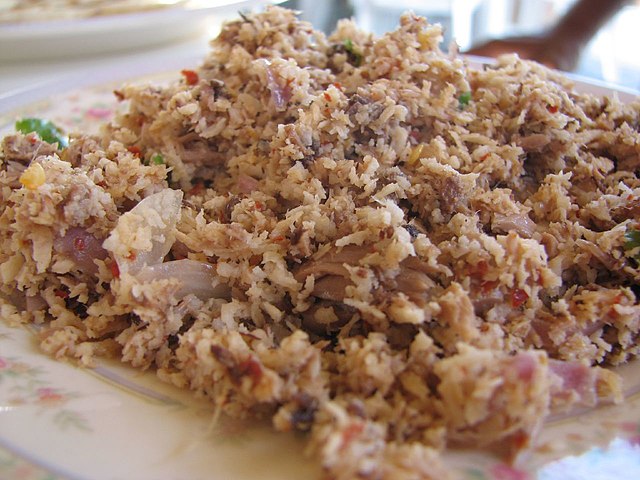The Maldives, known for its pristine beaches and turquoise waters, offers a culinary journey that’s just as enchanting. Maldivian cuisine, or Dhivehi cuisine, is a harmonious blend of tropical ingredients, bold spices, and cultural influences. Dive into the flavours of this island nation to discover its rich food heritage.
The Core Ingredients of Maldivian Cuisine
At the heart of Maldivian cooking are three essentials: fish, coconut, and starches like rice or breadfruit. Tuna, especially skipjack and yellowfin, is a staple ingredient in many dishes. Freshly grated coconut is often used to create creamy textures or as a garnish, while starches form the base of hearty meals. If you want to know the basics of Maldivian cooking, you can join a cooking class after lunch at Maldivian restaurants at luxury resorts such as Anantara Dhigu Maldives Resort.
Signature Dishes to Try
Mas Huni is a breakfast favourite, featuring shredded tuna mixed with coconut, onion, and chilli, served with flatbread (roshi). For a taste of Maldivian curries, garudhiya (a fragrant fish soup) and rihaakuru (a thick fish paste) are must-tries. Snacks like gulha (fried fish balls) and fihunu mas (grilled marinated fish) showcase the vibrant flavours of the islands.

Influences from Neighboring Cultures
Due to its location on ancient trade routes, Maldivian cuisine reflects influences from Indian, Sri Lankan, and Arab culinary traditions. Spices such as cumin, turmeric, and cardamom bring warmth to dishes, while Indian-inspired curry leaves and Sri Lankan-style coconut gravies create familiar yet distinct tastes.
Dining Experiences Beyond the Plate
Dining in the Maldives is not just about food; it’s about the setting. Enjoy fresh seafood at beachside grills, or indulge in fine dining at underwater restaurants. Traditional dining experiences in local homes, featuring home-cooked meals, offer a glimpse into the Maldivian way of life.
Related posts
Archives
Categories
- Appetizers (11)
- Arab (48)
- Bars (30)
- Burmese (6)
- Café (21)
- Casual Dining (21)
- Chinese (34)
- Coffee House (27)
- Desserts (15)
- Destination Dining (352)
- Diner (13)
- Family Restaurants (48)
- Fast Food (45)
- Fine Dining (502)
- Food Facts (193)
- Healthy Food (78)
- Hong Kong (10)
- Indonesian (15)
- Italian (2)
- Japanese (17)
- Main Dishes (38)
- Maldivian (70)
- Miscellaneous (5)
- Miscellaneous Topics (357)
- Palate (52)
- Recipes (64)
- Restaurants (179)
- Sea Food (71)
- Singaporean (31)
- Sri Lankan (60)
- Steaks & Grill (47)
- Street Food Stalls (131)
- Thai (88)
- Types of Cuisines (103)
- Vegan (40)
- Vegetarian (6)
- Vegeterian (27)
- Vietnamese (21)
- Western (11)

